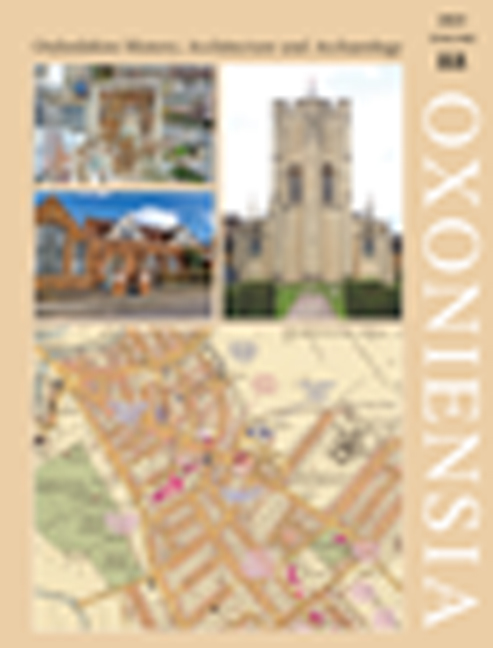Judith Curthoys, Cows & Curates: The Story of the Lands and Livings of Christ Church
Published online by Cambridge University Press: 15 May 2024
Summary
For many members of the public, the older Oxford and Cambridge colleges are institutions shrouded in mystique. As a consequence, they have tended to generate presumptions, notably that they are wealthy and are funded by large landed estates. Such ideas are exemplified by the age-old claim that one can walk from Oxford to Cambridge on land belonging to St John’s College in Oxford, and reinforced by periodic newspaper articles about college wealth.
The archivist of Christ Church, Judith Curthoys, has usefully brought the financing of one college into daylight with her book about her college’s landed assets – the last volume in her remarkable quartet of readable books about the college’s history. (For two earlier volumes, see Oxoniensia, vol. 84, 2019, pp. 297–9.) As is well known, Christ Church originated in a scheme of 1525 whereby Cardinal Thomas Wolsey sought to create the largest academic college in Oxford. His ambition required an enormous income and endowment, which he provided mainly by suppressing monastic houses (listed on pp. 189–90). His Cardinal College had annual revenues totalling c.ï¿¡2,400, derived from over sixty manors and other properties. After Wolsey’s fall from power (1529), Henry VIII replaced his college with a poorer collegiate church, King Henry VIII College (1532), and then replaced that with Christ Church (1546), which uniquely combined a cathedral and an academic college. Henry’s second foundation recreated the magnificence of Wolsey’s foundation, including an intended annual income of ï¿¡2,200 which was also produced mainly by appropriated monastic property. However, the king failed to provide statutes for internal governance. The corporate body in which the endowment of Christ Church was vested consisted of the cathedral chapter (a dean and eight canons); and although the chapter supported a hundred academic ‘students’ (some similar to fellows at other colleges), they were not legally part of the corporate body, involved in managing the endowment, until 1867.
Curthoys has organised her book as eight chapters. After an initial chapter about the origins and foundation of Christ Church, she has allocated four chapters to the history of ‘the agricultural estate’, and has interspersed these with chapters about different and distinctive parts of the endowment. The history of Christ Church’s landed endowment considerably reflects its unusual size and composition.
- Type
- Chapter
- Information
- Oxoniensia 88 , pp. 382 - 384Publisher: Boydell & BrewerFirst published in: 2024



